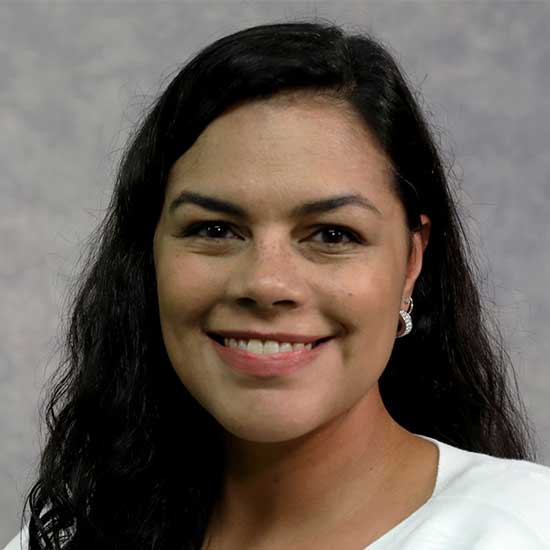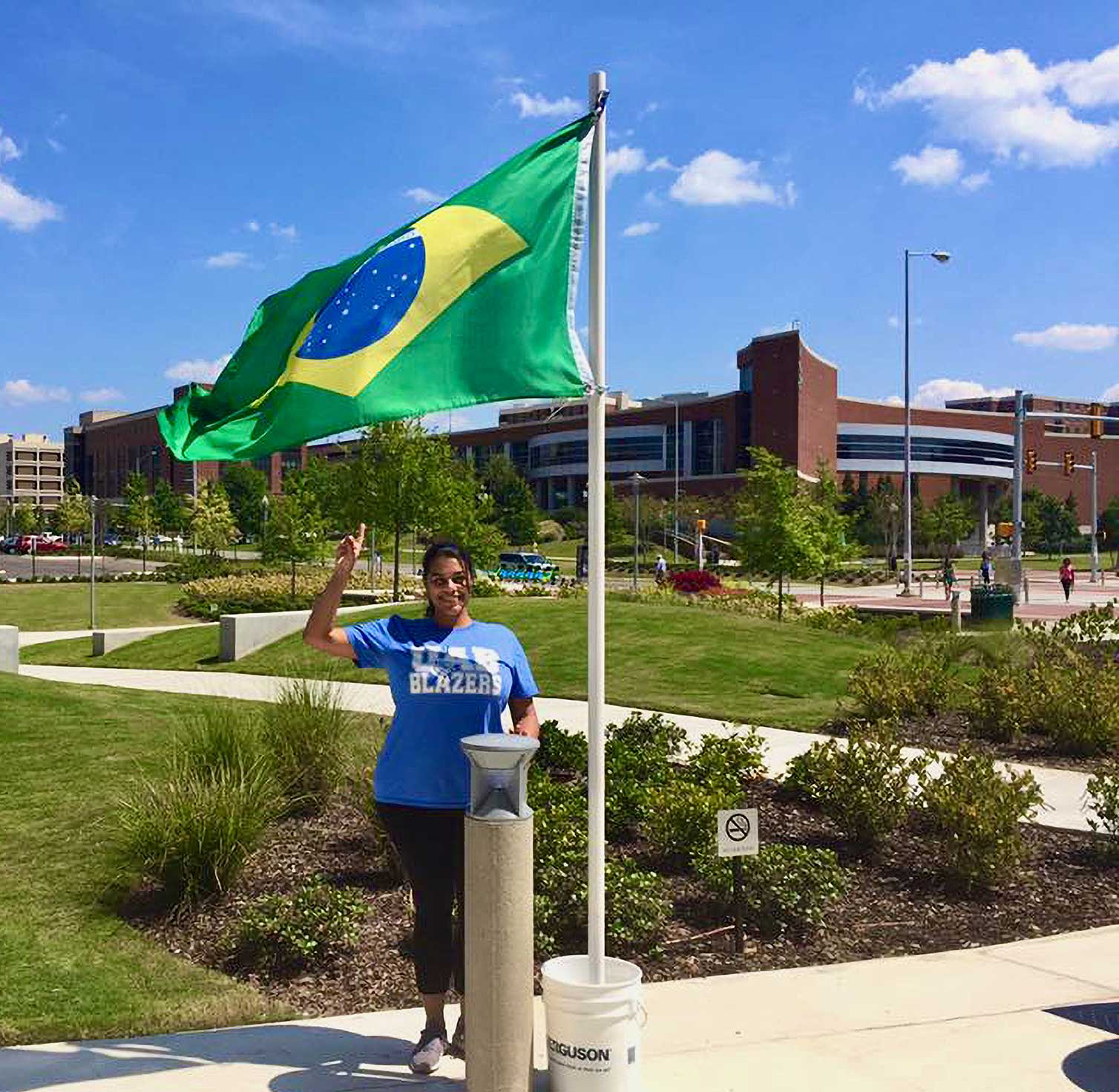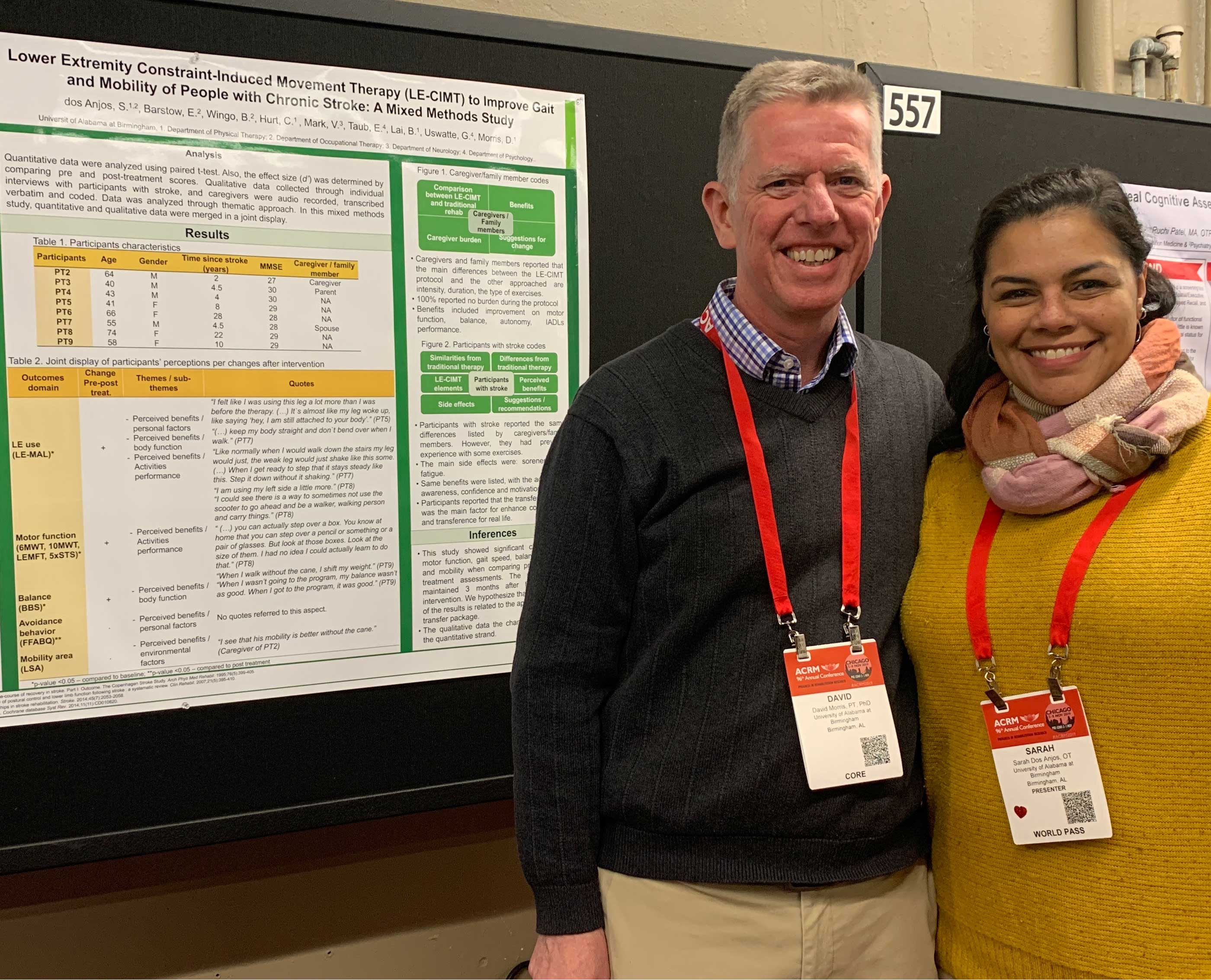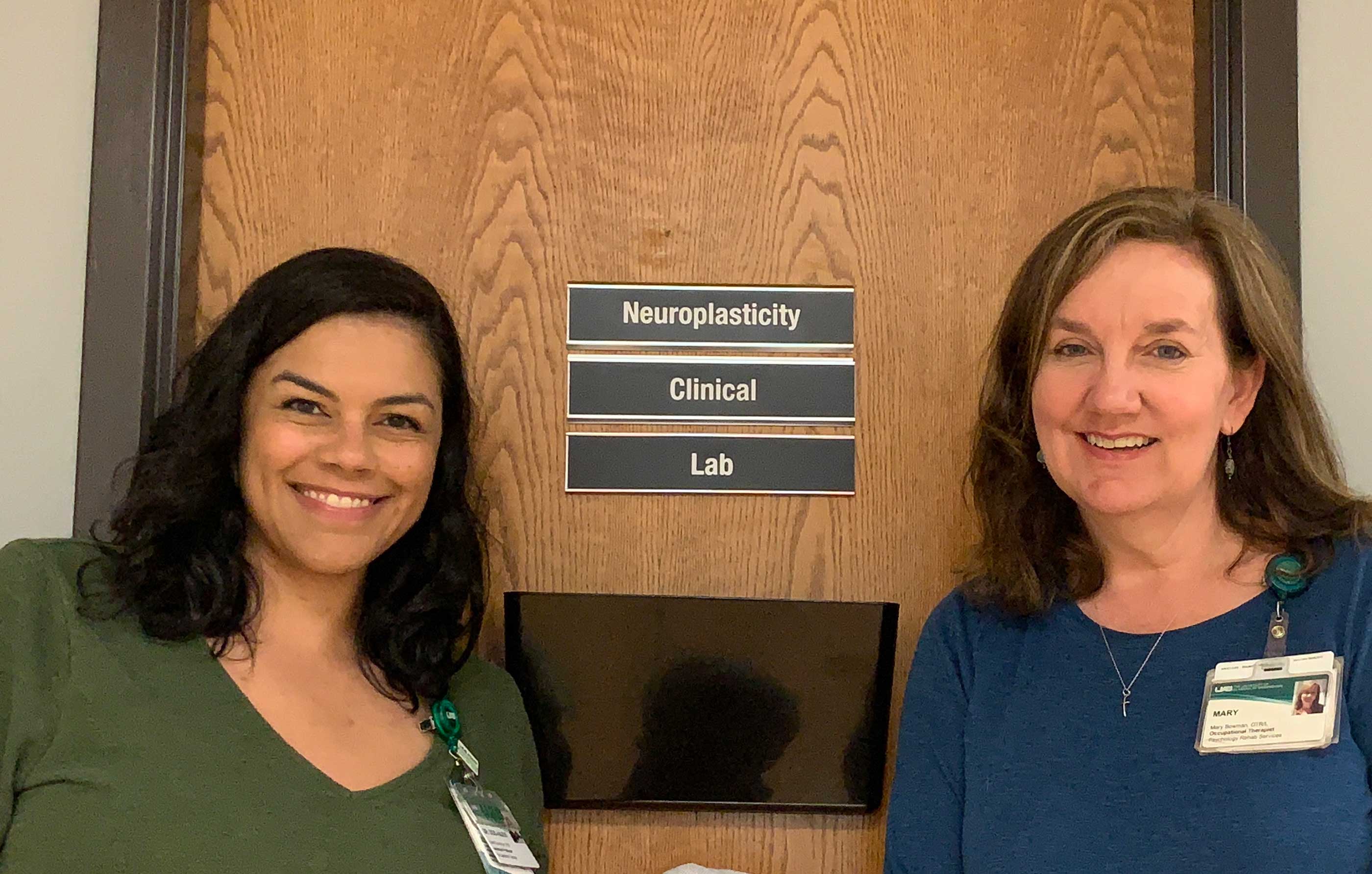Originally written and published May 26, 2022.
 Sarah dos Anjos, PhD, OTD, MS, OTR/LIt’s the complexity of human occupations and the need to consider the whole person to provide the best care that Sarah dos Anjos, PhD, OTD, MS, OTR/L, assistant professor of occupational therapy, most wants to impart to her students.
Sarah dos Anjos, PhD, OTD, MS, OTR/LIt’s the complexity of human occupations and the need to consider the whole person to provide the best care that Sarah dos Anjos, PhD, OTD, MS, OTR/L, assistant professor of occupational therapy, most wants to impart to her students.
“What we do is one hundred percent client centered,” she says. “We need to be able to see our clients holistically so we can understand how to help them and how to mediate the process so they can reach their goal, whatever that goal may be.”
Occupational therapists (OTs) must navigate many facets of their client’s lives to help them function as they need and want, she says.
“There’s family, there’s financial resources and health insurance, there is where they live and their resources and support system. At the same time, we must ask, what did they used to do, what they want to do now, what are the options available?” she says. “I want my students to be able to work with all these pieces to help their clients meet their goals.”
Dr. dos Anjos teaches in all the department’s programs, including the PhD in Rehabilitation Sciences. She has focused her clinical practice and research on helping people with stroke and other nervous system injuries recover and maintain function and quality of life.
“This is the population I’m passionate about, and the one I’ve spent my career working with,” she says.
Neurorehabilitation, however, wasn’t always her first choice of specialization.
Life Inspires a Calling
When Dr. dos Anjos began her bachelor’s degree in occupational therapy at the Medical Science School of Minas Gerais in Belo Horizonte, Brazil, she imagined a career caring for children with intellectual disabilities.
 Dr. dos Anjos under the Brazilian flag flying on UAB's campus.“Then life intervened and helped me figure out that adult neurorehabilitation is what I should do,” she says.
Dr. dos Anjos under the Brazilian flag flying on UAB's campus.“Then life intervened and helped me figure out that adult neurorehabilitation is what I should do,” she says.
First, a professor introduced to her the world of nervous system injuries and to helping clients recover from them. “I was fascinated by her expertise and the things that she was able to do for her clients—how she could help them function again, or do what they wanted to do,” she says.
Around the same time, the far-reaching effects of these devastating injuries affected her own family.
“My grandmother had multiple strokes, and I saw how her behavior changed and how that impacted the family,” Dr. dos Anjos says. “My grandmother was such a strong woman, a stubborn woman, and she was completely changed until the day she passed away.”
As she watched OTs and PTs work with her grandmother, her commitment to adult neurorehabilitation solidified.
Experience, Exploration Yield Expertise
Dr. dos Anjos spent more than a decade after graduation in clinical practice working with adults with brain injuries and seniors with dementia.
 Dr. dos Anjos and Dr. Morris present some of their CIMT research at an American Congress of Rehabilitation Medicine annual conference.“I had a high volume of clients with stroke, traumatic brain injury, brain tumors, and so many other neurological conditions, and I was intrigued by the power of the brain and how those conditions impact who we are, what we do, and how we interact with the world,” she says.
Dr. dos Anjos and Dr. Morris present some of their CIMT research at an American Congress of Rehabilitation Medicine annual conference.“I had a high volume of clients with stroke, traumatic brain injury, brain tumors, and so many other neurological conditions, and I was intrigued by the power of the brain and how those conditions impact who we are, what we do, and how we interact with the world,” she says.
She began studying interventions aimed at recovering body and motor function. A physical therapist (PT) colleague introduced her to constraint-induced movement therapy (CIMT), which helps people recover motor function after a stroke. Her colleague had begun a CIMT research program after David M. Morris, PT, PhD, FAPTA, now chair of UAB’s Department of Physical Therapy, visited Brazil in 2006 to give a lecture about the technique.
Dr. dos Anjos began using the CIMT protocol with her clients with stroke, and in 2008 came to UAB for additional training. When she returned home, she and two PTs founded the CI Therapy Group-Brazil, which teaches the protocol to OTs and PTs around the nation.
After a time, her passion for understanding the brain and nervous system took her back to school. She earned her master’s degree in neurology at Brazil’s Medical School of the São Paulo University, where her focus was transcranial magnetic stimulation for people with stroke.
She then decided to earn her PhD—and to go abroad to do it.
“I thought it would be interesting to see different things and learn with different people,” she says. “I already had a connection with Dr. Morris, and he encouraged me to apply UAB’s Rehabilitation Science Program. Now, here I am, six years later—I’ve finished the PhD and done my post-doctoral training.”
She is proud, she says, of the depth and breadth of her neurorehabilitation expertise, for which she credits an interdisciplinary learning and research environment.
“That knowledge came from interacting with people from other disciplines, my clients, and people from different parts of the globe, as well as from using different techniques,” she says. “I am so grateful to work on interdisciplinary teams with PTs, speech pathologists, neuropsychologists, and many others.”
She continues to build her knowledge. This summer she will complete both her Post-Professional Clinical Doctorate in Occupational Therapy and the Low Vision Rehabilitation Graduate Certificate Program
The Future
Dr. dos Anjos continues to explore ways to expand the applications and availability of CIMT, an offshoot of which is now being studied as an approach to increase processing speed in individuals with cognitive impairment.
 Dr. dos Anjos and Ms. Bowman outside the Neuroplasticity Clinical Lab they plan to expand into a clinical practice for individuals with stroke.She is interested in how elements of the CI Therapy protocol can be applied as add-ons to traditional motor training to induce transference of skills gained in the clinic to daily situations in the client’s own environment. One of her current research projects is aimed at developing a reimbursable form of CIMT (currently, people must pay out of pocket for this intensive therapy) and investigating how long people with stroke retain motor skill improvements and other benefits of the therapy.
Dr. dos Anjos and Ms. Bowman outside the Neuroplasticity Clinical Lab they plan to expand into a clinical practice for individuals with stroke.She is interested in how elements of the CI Therapy protocol can be applied as add-ons to traditional motor training to induce transference of skills gained in the clinic to daily situations in the client’s own environment. One of her current research projects is aimed at developing a reimbursable form of CIMT (currently, people must pay out of pocket for this intensive therapy) and investigating how long people with stroke retain motor skill improvements and other benefits of the therapy.
Dr. dos Anjos is doing some of this research through the Neuroplasticity Clinical Lab led by Assistant Professor of Occupational Therapy Mary Bowman, OTR/L, C/NDT, LSVT-BIG. They will soon expand the lab into a clinical practice that offers CIMT to individuals with stroke, and where faculty and students can develop clinical and research skills in neurorehabilitation.
Dr. dos Anjos is also passionate about diversity, equity, and inclusion (DEI). She and Carmen Capó-Lugo, PhD, PT, assistant professor of physical therapy, started the group “DEI Practical Conversations” for some members of the OT and PT faculty.
“This is something that is dear to my heart,” she says. “I’ve learned a lot since I moved [to the US], because of the things I have experienced here, the things other people from minoritized groups are going through, and the impact of these situations on their lives, their mental health, their relationships, and even their career.” (Read more about her DEI efforts within the School of Health Professions.)
When she’s not teaching, supporting DEI efforts, or diving deep into the workings of the brain, you may find Dr. dos Anjos eating out, reading, or exploring the outdoors.
She notes her door is always open to students, faculty, and staff. “I’m here to support whoever needs a hand,” she says.